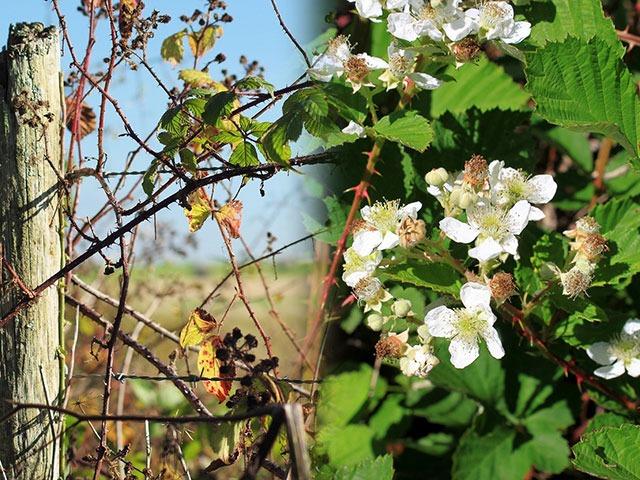Brambles- Problems & Questions- The bane of a gardeners life?
Brambles are a common occurrence across the country often spotted in woodlands, hedgerows and roadside verges. In time gone by this plant was highly valued for its different uses, the bramble roots were used as remedies for several intestinal problems and its leaves were used for treating varying mouth ailments. Alongside this, ancient Britons would use the bramble plants as boundary markers much like how we would use barbed wire today.
Whilst brambles were prized many people nowadays prefer not to have them in their garden and often have questions about them if they are present and often questions as to how to they can control, kill and get rid of them and even if they are dangerous – here we cover a few of those thoughts,
Can brambles be dangerous?
A lot of the questions we receive about brambles revolve around are brambles dangerous or are they poisonous. The short answer is although they are not poisonous they can still cause you problems if one of the plants thorns becomes implanted in your skin. If this happens it could result in infections caused by the pathogens the plant takes in from the soil. It is important that as soon as you notice you have a thorn in your skin to remove it with some tweezers and apply an antiseptic to the area to kill any bacteria. As a result of this danger, they can be a risky plant to have around young children and pets who won’t know to avoid the thorns. It is always advised that if you are handling brambles that you wear protective gardening gloves.
How to control brambles naturally
Natural methods can be used to control brambles however, these may not be as effective as using a chemical weed killer and likely will not work if you have larger bramble plants. Many suggest to spray a salt water mixture onto the leaves, stem and roots of the plant. The high salt content theoretically kills the plant and 10 days after spraying you will be able to remove the plant.
Another natural method is to dig out the brambles. This can, however, be an extremely strenuous task due to the extensive roots the plant possesses. If you miss just one root fragment, this could produce a new plant in itself so you could end up with the same problem again.
Generally if you have a large infestation then using a weed killer maybe the only root available to you – to find out more on the options for controlling brambles both naturally and with herbicides see our how to kill bramble guide.
How to make sure brambles do not return to the garden
There are routes that can be followed to get to a place where brambles are unlikely to return to the garden. The word “unlikely” is used here as brambles are very easily spread due to birds eating the blackberry fruit produced by the bramble plant and passing the seeds through their digestive system. This is something you cannot control and will need to keep your fingers crossed this doesn’t happen!
The first steps you can take in order to make sure brambles do not return is to apply a weed killer and allow time for the plant to die back - this can take from 7 – 14 days but if it can be left longer it is often advisable to do so as it will help to improve results. Once the bramble plant has died, you will be able to dig out the plant making sure that you have all of the roots. As stated above, if you leave any fragment of root behind, a new plant could be created from it. If you want to further increase the chances of brambles from returning you should ensure that you do not leave any bare ground as, if you do, you could be at risk of re-infestation – bare soil is an invitation for weeds and brambles to grow. To avoid these bare patches it is advisable to either replant the areas with desired plants, turf over with grass seed or gravel the areas. Not only does this reduce the risk of brambles returning but other weeds as well.
If you did not want to cover the bare ground and did not want anything to grow, you can keep the area plant and weed free for up to six months by using a residual weed killer such as a tank mix in a knapsack of Clayton Apt and Gallup Biograde Amenity. The Gallup Biograde or other glyphosate based weed killer will kill the weeds that are present and the Clayton Apt will form a barrier in the soil that stops plants from germinating.
Please note when using a residual weed killer such as Clayton Apt no plants or grass will grow for a period of months





